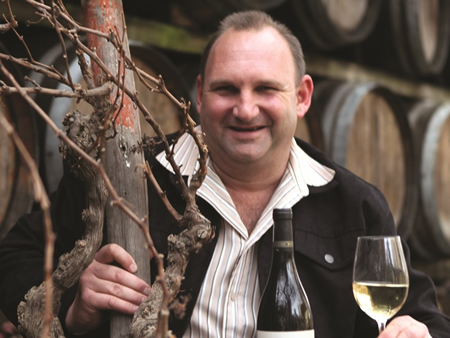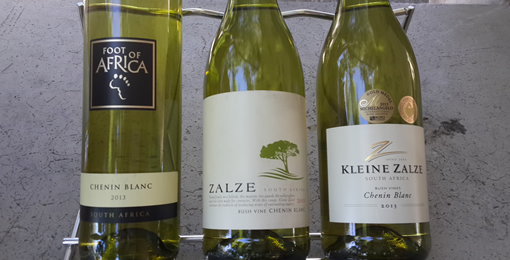While the Loire Valley may be the viticultural birthplace of Chenin Blanc, the variety has found a second home in South Africa. The Chenin Blanc grape lends itself to an extraordinary range of styles. The varietal is growing in popularity and South Africa is currently the biggest producer of Chenin Blanc wines, with plantings distributed across many different sites.
One winemaker who is extremely passionate about Chenin Blanc is Johan Joubert from Kleine Zalze, who has managed to produce a full range of well-made Chenins from the exceptionally good Kleine Zalze Vineyard Selection right up to a Methode Cap Classique, which will be released early next year.
“Here at Kleine Zalze it’s really about finding out how wine is divided into different wine blocks,” he says as he shows us a detailed file on soil complexity and the influence it has on different styles of Chenin Blanc, over lunch at Terroir Restaurant the other day.

Cellar Master Johan’s love for the grape and for the winemaking process started way back on his family’s wine grape farm.
In the past, Johan has expressed his concern of the ongoing threat facing South Africa’s old bush vine Chenin Blanc.
“It’s about economic survival for these old vines,” he remarked, pointing out that the bush vines have half the amount of arms and shoots of normal trellised vines which contributes to a yield of just 4-6 tonnes per hectare. The result: bush vines continue to be ripped out in favour of more productive vines.
So how does Johan go about saving these vines? According to him it is very important to make it financially viable for the producer by making wines of higher quality and real personality. This way local producers can definitely go up in terms of price points.
Another important factor to take into account is the consumer. Tasting through the first range of Chenin Blancs, classified as ”fresh and fruity” and all 2013 vintages, it became clear that each wine is designed to please a certain palate. The Kleine Zalze Foot of Africa, produced especially for the Swedish market, offers tropical flavours, where as the Zalze Bush Vine Chenin Blanc, produced for Waitross in the UK, steers more towards citrus flavours, such as lemon and lime. The Kleine Zalze Bush Vine, produced exclusively for the South African market, shows much more complexity and upfront fruit flavours.
The next line-up of Chenin Blancs from the Kleine Zalze range focused on the attributes each soil type brings to the final wine. The grapes used in the Kleine Zalze Family Reserve come from 3 different soil types and are blended separately. The granite soils create freshness in Chenin Blanc, while the duplex soils give a longer hang period that definitely contributes to the structure of the blend. The shale is much more broken so the roots go quite deep, which gives good length to the wine.
The final line-up of chenins represented the rich, ripe and wooded category. Most wine drinkers are under the impression that white wines can not age, but the 2005 and 2008 vintages from the Kleine Zalze Vineyard Selection range prove this myth wrong. To this palate, the freshest, liveliest and most limber take on the varietal in the day’s lineup was the 2008 Kleine Zalze Vineyard Selection. But these older styles’ with botrytised character, darker colour, and high residual sugar and alcohol levels (14.3-15% abv) is not easy to sell commercially. To address this issue, Johann has since tweaked this expression from the 2009 vintage to create a wine at 13.9% abv and just 5% botrytis influence. The current vintages also reflect similar analysis.
The extraordinary culinary creations of chef Michael Broughton from Terroir complemented the various styles of Kleine Zalze Chenin Blancs extremely well. Lovers of fine food and chenin blanc don’t have to look any further than this winning combination.






